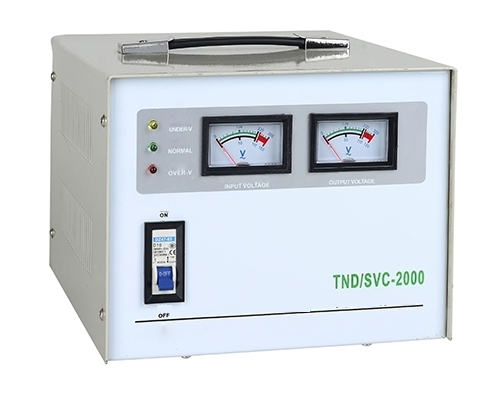Servo Voltage Stabilizers are employed where highly accurate voltage is required. It receives a fluctuated AC voltage of high or low amplitude and provides a constant level of voltage to the output. These are the most recommended systems to save energy and ensure a longer life for electrical devices. The selection of the right stabilizer suiting your applications is critical. The key areas to be considered critically are the nature, power consumption range of your application, and the level of voltage fluctuations that are experienced in your locality. You need to know the rating of the equipment to be protected – the ratings are normally mentioned as KW, KVA, or in Amps. You will also need to know the nominal line voltage and frequency.

Here are a few simple tips to select a stabilizer:
- Check the voltage, current & power rating of the device. It is written on the specification sticker near the power socket else check the user manual.
- In India standard service voltage will be 230VAC, 50 Hz.
- To get the maximum power – Multiply “230 x Max rated Current” of all the equipment that are to be connected to the stabilizer. Add a 20-25% safety margin to arrive at stabilizer rating. If you have plans to add more devices later, you can keep buffer for them.
- You should also consider the surge current which flows when you switch on the device.
- In case the Voltage Stabilizer has a rating in watts also, assume a power factor of 0.8 (W=V*A*pf).
The most important thing is to know the nature of the load connected to the stabilizer. First, you must note down the power (or Watts) for all the appliances that will be connected to a stabilizer. The sum total of the power consumption (or Watts) will give you the load on the AC stabilizer in watts. But most stabilizer sizes are in VA (Volt Ampere) or kVA (kilo Volt Ampere which is equal to 1000 Volt Ampere). Although to get the actual VA (or Volt Ampere) from Watts (W) you will have to do some measurements, to give a rough approximation, you can increase the Watts value by 20% to get the approximate VA size that you may need.
So for e.g. if the sum of Watts connected to your stabilizer is 1800 then you can take a 2kVA static stabilizer. (Please note that 20% is suitable for residential systems and may not work in industries if your power factor is bad).
Usually, a stabilizer comes with different working ranges (working range is the voltage range in which the voltage stabilizer operates/stabilizes the input utility voltage and provides a desirable output voltage). It’s important to choose your stabilizer suiting the voltage fluctuations in your locality.
Make an idea of the level of power fluctuations that are common in your location. (E.g. extremely low/high voltage areas, moderate-high/low voltage area,s etc.). You have to choose the working range of your stabilizers that will address the demands of your location. For instance, you might need to choose the stabilizer with a wide working range, if your location experiences extremely low/high voltage fluctuations.
